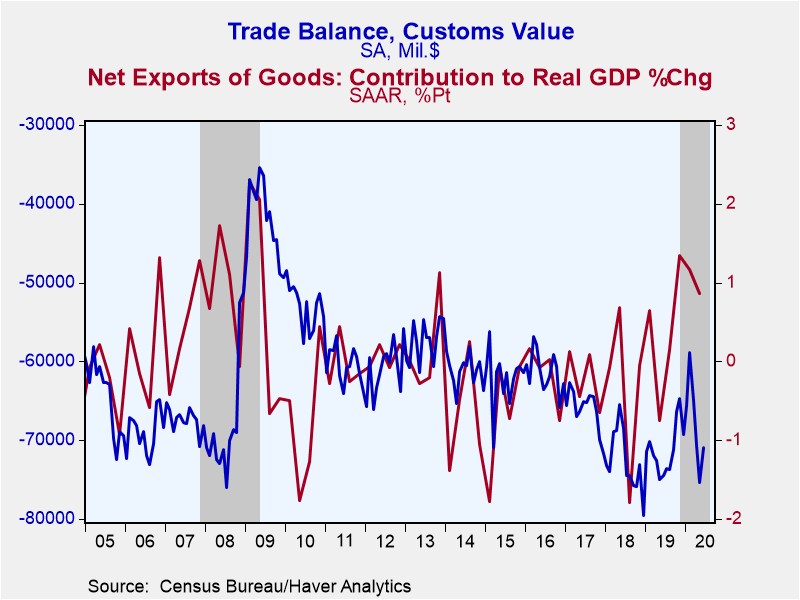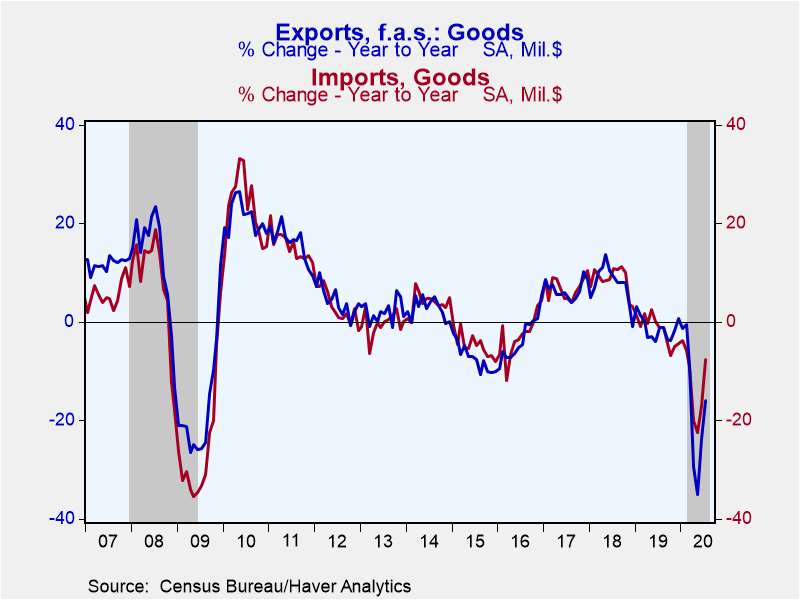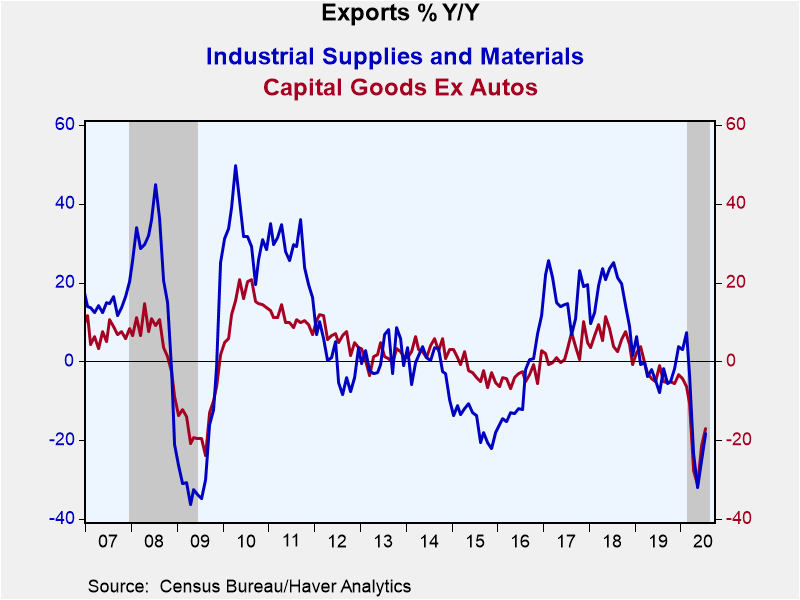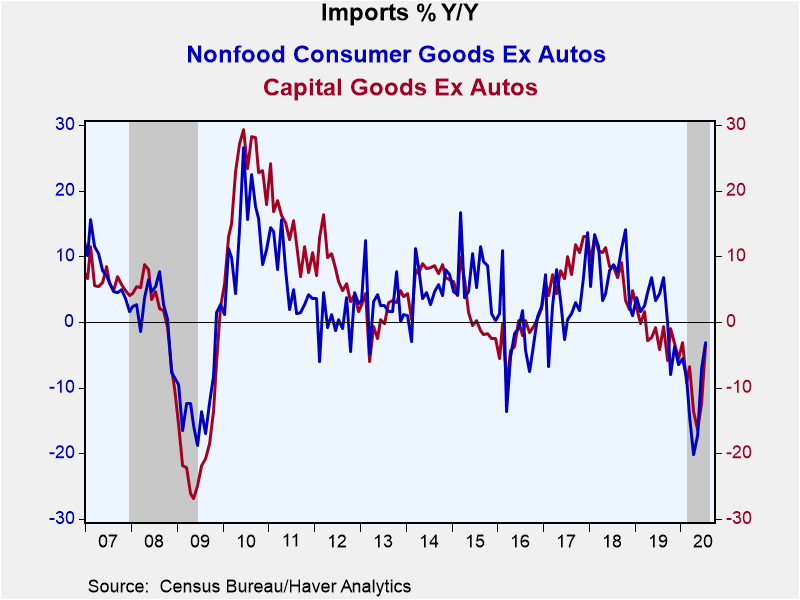 Global| Aug 28 2020
Global| Aug 28 2020U.S. Goods Trade Deficit Widens Substantially in July
Summary
• Trade deficit increased to $79.3 billion in July from $71.0 billion in June. • Exports and Imports both grow by 11.8%. Imports roughly 70% larger than exports causing widening. • Exports still 16.5% below February 2020 level. [...]
• Trade deficit increased to $79.3 billion in July from $71.0 billion in June.
• Exports and Imports both grow by 11.8%. Imports roughly 70% larger than exports causing widening.
• Exports still 16.5% below February 2020 level. Imports down just 1.1%.
The advance estimate of the U.S. trade deficit in goods widened substantially more than expected to $79.32 billion in July from $70.99 in June (the June figures as well as the month-on-month and year-on-year comparisons below are based on revised data from the monthly International Trade Report; updated July figures will be released next week). The Action Economics Forecast Survey anticipated a $72.6 billion deficit.
Both exports and imports of goods grew 11.8% on the month (-15.9% and -7.6% y/y respectively). The trade deficit widened substantially because imports are roughly 70% larger than exports. Despite this growth, exports are still 16.5% below their February level and 19.4% from the May 2018 peak. Meanwhile, imports are down just 1.1% from February, but 10.5% from their October 2018 peak.
All major categories of exports and exports -- which is the only data available in the Advance Trade report -- grew. Exports of capital goods, which vies with industrial supplies to be our largest export category increased 7.5% (-17.0% y/y). Industrial supplies were up 7.1% (-18.4% y/y), Imports of nonfood consumer goods, gained 6.6% (-3.4% y/y) while capital goods, the second largest import category and an indicator of capital spending, grew 8.0% (-3.4% y/y).
The advance international trade data can be found in Haver's USECON database. The expectation figure is from the Action Economics Forecast Survey, which is in AS1REPNA.
| Advance U.S. Foreign Trade in Goods (Customs Value $) | Jul | Jun | May | Jul Y/Y | 2019 | 2018 | 2017 |
|---|---|---|---|---|---|---|---|
| U.S. Trade Deficit ($ bil.) | -79.32 | -70.99 | -75.38 | -73.64 (7/19) |
-854.37 | -872.04 | -792.40 |
| Exports (% Chg) | 11.8 | 14.3 | -6.0 | -15.9 | -1.4 | 7.7 | 6.6 |
| Imports (% Chg) | 11.8 | 5.1 | -0.6 | -7.6 | -1.6 | 8.5 | 7.0 |
Note: Current month is based on Advance Trade data; Previous months reflect revised data from International Trade release.
Gerald D. Cohen
AuthorMore in Author Profile »Gerald Cohen provides strategic vision and leadership of the translational economic research and policy initiatives at the Kenan Institute of Private Enterprise.
He has worked in both the public and private sectors focusing on the intersection between financial markets and economic fundamentals. He was a Senior Economist at Haver Analytics from January 2019 to February 2021. During the Obama Administration Gerald was Deputy Assistant Secretary for Macroeconomic Analysis at the U.S. Department of Treasury where he helped formulate and evaluate the impact of policy proposals on the U.S. economy. Prior to Treasury, he co-managed a global macro fund at Ziff Brothers Investments.
Gerald holds a bachelor’s of science from the Massachusetts Institute of Technology and a Ph.D. in Economics from Harvard University and is a contributing author to 30-Second Money as well as a co-author of Political Cycles and the Macroeconomy.









